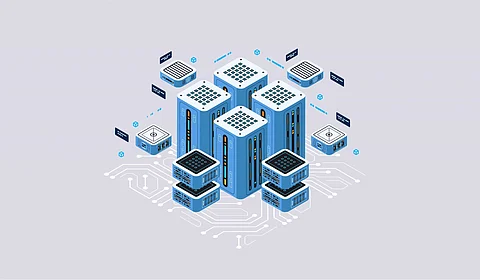

Data is everywhere and how do organisations decode and digress it defines how successful they would be a winner the data race. Data exists in the cloud, data lakes and data silos, organizations need to collect, organize, and analyse this data to reap long term gains. The data integration journey that organisations go through varies from an organisation structure to another. The persistent question remains, how do enterprises decode their data integration journey?
To instil confidence, enterprises must chalk out their data strategy plans. To start with they must check the availability of data at their disposal and resource constraints who will on convert this data into meaningful information!
1. Earmarking a Budget for Data Ingestion
2. Making Data Resource Ready
3. Data Sanitation and Quality Checks
4. Data Standardization
5. Harnessing Data Insights
• Earmarking a Budget for Data Ingestion
There goes the adage "Before enterprises can digest data, they must ingest it!" Well true to many organisations, an enterprise needs to access the data sources before it can lay on analytics and data mining algorithms. These data sources may include data storages as well as relational databases and Hadoop sources, data lakes, data warehouses and data silos.
• Making Data Resource Ready
Before an enterprise performs any transformation or analysis on its data, they must have the resources available, along with data integration tools. Data delivery is possible when businesses are resilient and adapt to the best resource practices. These resources or data experts can be in house or external vendors that an enterprise may engage.
• Data Sanitation and Quality Checks
The next step is to ensure that the collated data is accurate, complete, and relevant.
Bad data = Bad analysis,
An unpleasant situation which an Enterprise would love to avoid!
Data cleansing tools are essential to creating data pipelines, or analysis-ready data which makes it easy for an analyst to easily harness the data for model building. Data sanitization and quality checks make data enterprise-ready.
• Data Standardization and Quality Checks
Every enterprise has a separate need for data, and to catalyse this need enterprises need to ascertain that the data Standardization checks are met along with the persistent quality control checks. This step makes it possible for Data Standardization and quality checks, for an efficient and effectively harnessing data for intelligent insights.
• Harnessing Data Insights
The final step is to understand a more complete picture of the data at disposal to extract insights. An analyst may use services like Watson Knowledge Catalog to create a smart data catalogue to help with data governance, or IBM Watson Studio AutoAI to quickly develop machine learning models and automate hyperparameter tuning. This process lets enterprises transform data and operationalize data delivery for analytics and business-ready AI use cases.
Join our WhatsApp Channel to get the latest news, exclusives and videos on WhatsApp
_____________
Disclaimer: Analytics Insight does not provide financial advice or guidance. Also note that the cryptocurrencies mentioned/listed on the website could potentially be scams, i.e. designed to induce you to invest financial resources that may be lost forever and not be recoverable once investments are made. You are responsible for conducting your own research (DYOR) before making any investments. Read more here.
